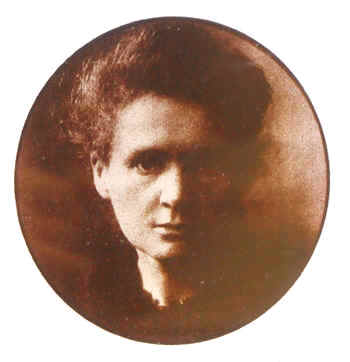Photograph of Marie Curie Processed with Uranium Toner

Over the years, uranium has had a variety of applications in the photographic industry, but its most common use has been as a toner. The print shown in the photo to the right was treated for ten minutes in Kodak Uranium Toner K-9. It now contains about 3 milligrams of depleted uranium. The toning replaced some of the silver in the original print with uranium thus causing the image to change progressively from black to reddish brown. The surface activity in the darkest areas is approximately 160 cpm above background as measured with a 2" pancake GM probe. How much uranium would end up in the final image would depend on how long the print was left in the toner and how dark the image was.
While not certain, it is possible that some of Ansel Adams' original prints were treated with uranium toner—the latter was apparently found in his darkroom after his death. Unfortunately, I have not been able to locate any references to uranium toner in his books.
Adams often photographed landscapes in the same areas where uranium was mined. It would certainly have had a touch of poetry about it if any of his photographs incorporated uranium that came from the area where the photograph was taken.
There are various formulae for uranium toner. Here is one:
- Water: 1000 ml
- Uranium Nitrate: 2.5 g
- Potassium Oxalate: 2.5 g
- Potassium Ferricyanide: 1 g
- Ammonium Alum: 6 g
- Hydrochloric Acid (10%): 5 ml
Produced and donated by William Kolb.
